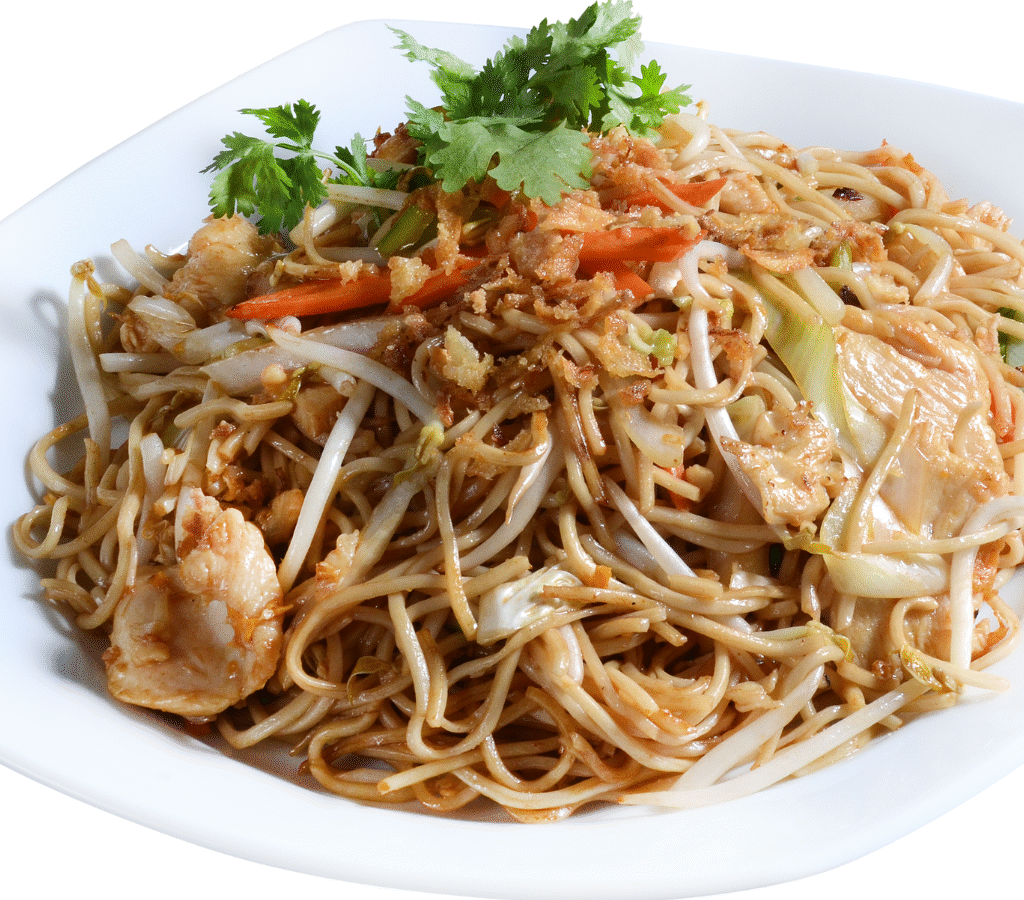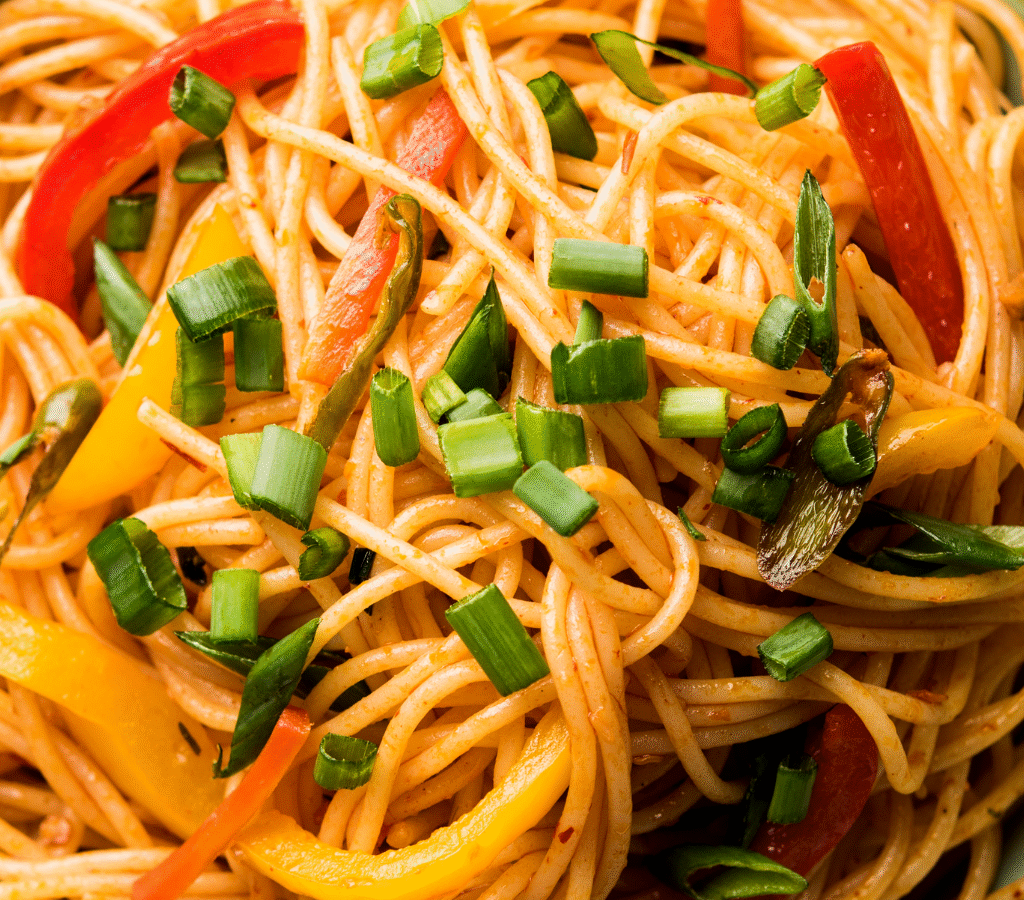Noodles are one of the most beloved and versatile foods across the globe. Whether drenched in soup, stir-fried with vegetables, or served chilled with a dipping sauce, noodles offer a world of textures, flavors, and possibilities. In this article, we’ll explore the origins of noodles, the different types, and provide step-by-step guidance on how to make them from scratch—including tips for cooking and serving.
1. A Brief History: The Ancient Roots of Noodles
The story of noodles is ancient and rich. The earliest known noodles—dated to around 2000 BCE—were discovered at the archaeological site of Lajia, in China. These ancient strands were composed of millet and possibly wheat or barley, offering a glimpse into early culinary experimentation Wikipedia.
Historical records, including a third-century Chinese dictionary, mention mian pian—small bits of dough made akin to early noodles, cooked in boiling water, illustrating the evolution of noodle-making in Chinese cuisine The Atlantic. While Italians and Arabs also claim early noodle-making traditions, the breadth and longevity of Asian noodle culture remain remarkable.

2. Types of Noodles: An Overview
Noodles span a vast category, made from various grains and starches. They can be grouped broadly into three categories:
a) Wheat Noodles
Common types include:
- Ramen – Chewy, thin wheat noodles often served in broth HowStuffWorksThe Spruce Eats.
- Udon – Thick, soft wheat noodles popular in soups or stir-fries HowStuffWorksWikipedia.
- Egg noodles – Enriched with egg, versatile for stir-fries and more HowStuffWorks.
b) Rice Noodles
Made from rice flour, these range from thin vermicelli to wide rice sticks, used in soups, stir-fries, and salads HowStuffWorksWikipedia.
c) Other Starch-Based and Specialty Noodles
- Soba – Buckwheat noodles with a nutty flavor, enjoyed hot or cold WikipediaTasting Table.
- Glass noodles (mung bean threads or kelp noodles) – Translucent, lightweight, glazing beautifully in soups or salads HowStuffWorksculinaryartsswitzerland.com.
- Shirataki – Low‑calorie konjac root noodles, popular for gluten‑free or low‑carb diets culinaryartsswitzerland.comThe Times of India.
Each noodle type brings unique textures and best preparation methods—what’s suitable for ramen might not work for fragile rice noodles.
3. Making Noodles from Scratch: Step-by-Step
Creating homemade noodles is a rewarding process—here’s how to do it for two common kinds: wheat egg noodles and rice noodles.

A) Homemade Wheat Egg Noodles
Ingredients (serves 4):
- 2 cups (250 g) all-purpose flour
- 2 large eggs
- ½ tsp salt
- 2–3 tbsp water (if needed)
Instructions:
- Prepare the dough: Mix flour and salt in a bowl. Create a well in the center, crack in the eggs, and mix with a fork. Gradually incorporate flour. If too dry, add water slowly until dough forms.
- Knead: On a lightly floured surface, knead the dough for 5–8 minutes until smooth and elastic. Rest covered for 20 minutes.
- Roll and cut: Roll into a thin sheet (~1.5 mm thick). Dust with flour, then slice into ribbons (spaghetti or fettuccine width as desired).
- Cook: Boil in salted water for 2–4 minutes until al dente. Drain, rinse with cold water, and toss with a drizzle of oil to avoid sticking—Chef Martin Yan recommends rinsing and oiling noodles to prevent clumping Food & Wine.



- Serve: Use in soups, sauces, or stir-fries.
B) Homemade Rice Noodles (Rice Sticks)
Ingredients (makes about 4 servings):
- 1½ cups (210 g) rice flour
- ½ cup (70 g) tapioca starch (for elasticity)
- 1 tsp salt
- 1½ cups (355 ml) water
- 1 tbsp vegetable oil
Instructions:
- Mix batter: Combine flours and salt. Whisk in water and oil until smooth.
- Steam batter: Pour batter into an oiled shallow tray. Steam for 6–8 minutes until set.
- Cut and separate: Let cool, then slice into strips. Gently peel apart.
- Soften before use: Soak in warm water for a few minutes. This softens them without damage—Chef Yan advises treating rice noodles delicately, soaking instead of boiling, to avoid breakage Food & Wine.
- Use in dishes: Perfect for stir-fries, soups, or cold salads.
4. Best Practices for Cooking and Handling Noodles
Cooking:
- Always follow package directions for dried or fresh noodles—they vary widely Food & Wine.
- Test doneness by taste rather than rely solely on time Food & Wine.
Preventing Sticking:
- Rinse cooked noodles under cold water, then toss with a little oil—this is especially helpful for wheat noodles Food & Wine.
Soup vs Stir-Fry:
- For soups, parboil noodles separately, then add to broth. This prevents them from over-soaking or altering texture Food & Wine.
- Rice noodles are especially fragile—approach with gentle handling whether in stir-fries or soups Food & Wine.
5. Serving Suggestions and Cultural Highlights
Noodles have a way of reflecting culture:
- In Japan, shrimp tempura atop udon, or cold soba with dipping sauce, are seasonal pleasures WikipediaTasting Table.
- Soba’s buckwheat nutrition is historically revered—not just tasty, but spiritually and physically sustaining Tasting TableWikipedia.
- Asian noodles span diverse ingredients and forms—from wheat (lo mein, ramen) to rice, and even mung-bean and konjac-based options Simply Recipes.
- Iconic dishes like Vietnamese pho, Thai pad Thai, Korean japchae, and Filipino pancit showcase noodles as cultural cornerstones Teen VogueWikipedia.
6. Why Homemade Noodles Are Worth the Effort
- Customization: Control thickness and ingredients—gluten-free? Use rice or shirataki! Prefer a chewier bite? Opt for wheat and egg.
- Freshness: Homemade noodles taste brighter and have artisanship.
- Fun and satisfying: Noodle-making connects you to tradition—and it’s genuinely enjoyable.
As Chef Martin Yan puts it, “Noodles are a lot of fun,” and with the right techniques, anyone can master them Food & Wine.
Read also how to make kaman dokla?
Sample Noodle-Making Plan (For Home Chefs)
- Pick your noodle base: wheat, rice, buckwheat, or alternative.
- Gather ingredients and choose method (kneading vs. steaming).
- Make dough/batter, rest or steam as needed.
- Cut noodles to desired shape.
- Cook, rinse, and oil (if applicable).
- Assemble your noodle dish—soup, stir-fry, cold salad, or dipping selection.
- Enjoy and experiment with toppings, sauces, and garnishes.
Final Words
Making noodles at home bridges history, tradition, and creativity. From ancient Chinese origins to modern gourmet bowls, noodles continue to unite and delight across continents. Whether you’re slicing fresh egg noodles or gently soaking delicate rice sticks, you’re participating in a timeless and delicious culinary art.
Now, gather your flour, rice, or starch—and let the noodle-making begin!
If you’d like a printable recipe card, guidance for gluten‑free versions, or traditional recipes from specific cuisines, feel free to ask!Attach
Search
Study
Voice
ChatGPT can make mi
